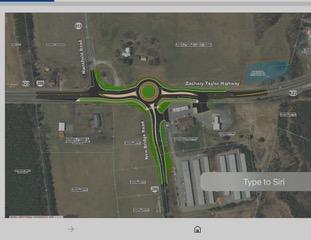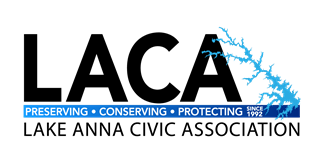By Sue Biondi - January 2023
If you’re new to the area or just forgot, the Virginia Department of Transportation (VDOT) has planned a large roundabout, also known as a traffic circle, at the intersection of Rt 522 and 208, also known as Ware’s Crossroads. Construction is set to begin this year.  This intersection is listed in VDOT Culpeper District’s “Top 100” intersections, based on the number of serious or fatal crashes. Refer to VDOT’s website, which has links to their public crash database. Frequently, traffic backs up to Alma Gaynelle Drive (Rt. 1190) and beyond. During the summer months, you will see cars trailering boats and recreational vehicles, motor homes, 18 wheelers hauling logs, and various other large commercial vehicles in this traffic backlog.
This intersection is listed in VDOT Culpeper District’s “Top 100” intersections, based on the number of serious or fatal crashes. Refer to VDOT’s website, which has links to their public crash database. Frequently, traffic backs up to Alma Gaynelle Drive (Rt. 1190) and beyond. During the summer months, you will see cars trailering boats and recreational vehicles, motor homes, 18 wheelers hauling logs, and various other large commercial vehicles in this traffic backlog.
Adding to the intersection is a proposed shopping center located west and south of Rt. 522. Opinions vary depending on whether drivers have experienced navigating through a roundabout. Some see them as a great solution as opposed to placing a traffic light, or worse yet, a 3-way stop sign, and some see them as a nuisance. A recent newspaper article explained the pros and cons of installing roundabouts, and here are some highlights of the research.
According to research by Lee Rodegerdts, an engineer and amateur photographer from Portland, Oregon, no federal agency tracks the nation’s roundabouts, rotaries or traffic circles. Rodegerdts wrote the book “Roundabouts: An Informational Guide”. Through research, when he began, he counted about 300 roundabouts nationwide. Just 25 years later, he counted about 9,000. The modern roundabout relies on a geometric design that forces traffic to slow down. In traditional rotaries and traffic circles, traffic moves faster and vehicles already in the circle often must yield to newcomers.
In the United States, the fastest roundabout growth is in suburbs and rural areas, as it is difficult to fit roundabouts into the dense urban environment. Statistics show that a roundabout will reduce fatal crashes by 90 percent and cut all car-crash injuries by at least 75 percent. At a rural two-way stop, a roundabout can slash all traffic injuries, both fatal and nonfatal, by almost 90 percent. A roundabout prevents a vehicle from driving through at 60 miles per hour and T-boning another vehicle, a common occurrence in typical rural intersections.
Roundabouts can reduce pollution and allow designers to fit more traffic in a smaller space. Interestingly, Florida has the most roundabouts, Nebraska the most roundabouts per person, and Maryland has the most roundabouts per mile of road and is considered the roundabout champion. Virginia ranks #14. For photos of roundabouts, traffic circles, rotaries and traffic-calming circles, refer to the article written by Andrew Van Dam, November 25, 2022.
In conclusion, there is no doubt that roundabouts keep traffic flowing and reduce crashes that occur in intersections. The inner circle can include plantings that make it aesthetically pleasant. The community will have to adjust to the change to this intersection, but when there are no longer the traffic tie-ups and accidents, they may have a change of heart in rejecting the decision to install a roundabout as opposed to a traffic light.
sue.biondi@lakeannavirginia.org
